Rank Class | Scientific name Spirochaetes Higher classification Spirochaetae | |
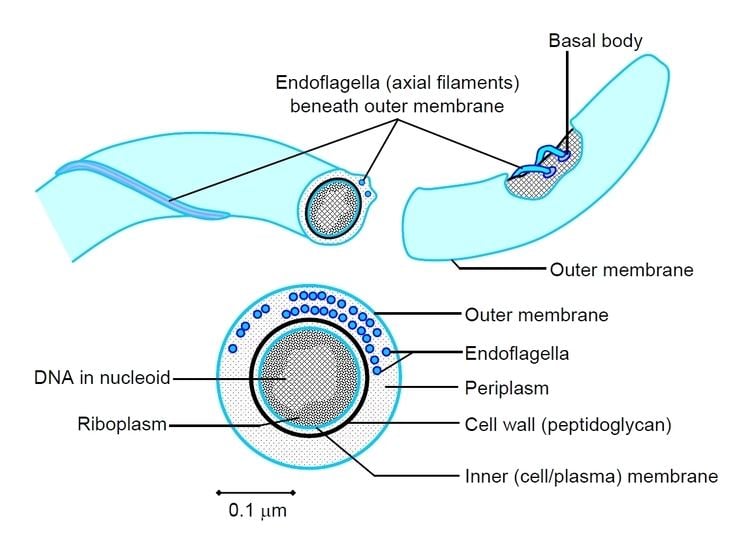 | ||
Phylum Spirochaetes Garrity & Holt 2001 Similar Bacteria, Ixodes, Spirillum, Deer tick, Rickettsia | ||
Spirochaete ii
A spirochaete (/ˈspaɪroʊˌkiːt/) or spirochete is a member of the phylum Spirochaetes (/ˌspaɪroʊˈkiːtiz/), which contains distinctive diderm (double-membrane) bacteria, most of which have long, helically coiled (corkscrew-shaped or spiraled, hence the name) cells. Spirochaetes stain gram-negative and are chemoheterotrophic in nature, with lengths between 3 and 500 µm and diameters around 0.09 to at least 3 µm.
Contents

Spirochaetes are distinguished from other bacterial phyla by the location of their flagella, sometimes called axial filaments, which run lengthwise between the bacterial inner membrane and outer membrane in periplasmic space. These cause a twisting motion which allows the spirochaete to move about. When reproducing, a spirochaete will undergo asexual transverse binary fission. Most spirochaetes are free-living and anaerobic, but there are numerous exceptions. Spirochaetes bacteria are diverse in their pathogenic capacity, the ecological niches that they inhabit, as well as molecular characteristics including GC content and genome size.
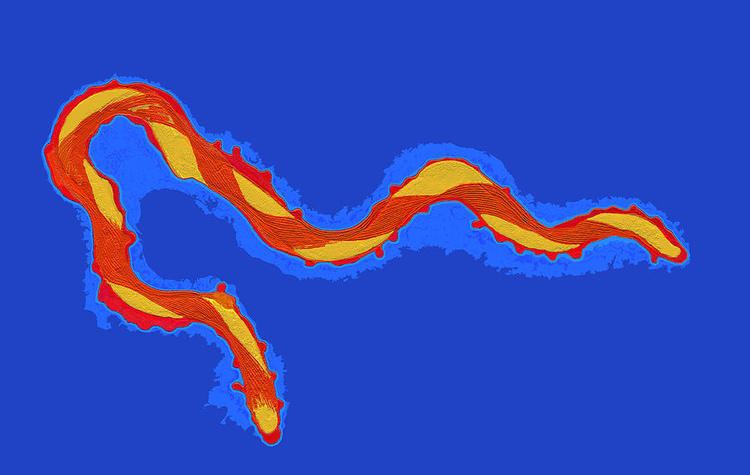
Pathogenicity
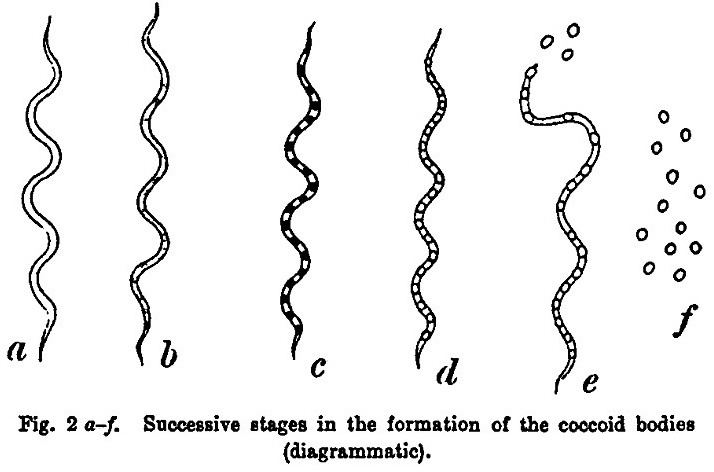
Many organisms within the Spirochaetes phylum are causative agents of prevalent diseases. Disease-causing members of this phylum include the following:
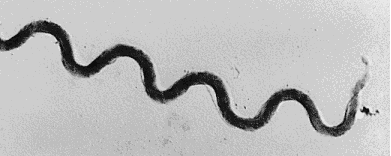
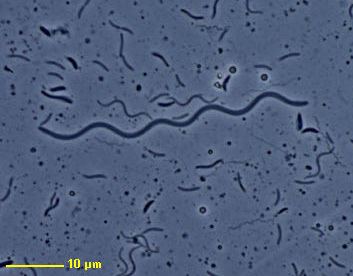
Spirochetes may also cause dementia and may be involved in the pathogenesis of Alzheimer's disease. Salvarsan, the first partially organic synthetic antimicrobial drug in medical history, was effective against spirochaetes only and was primarily used to cure syphilis.
Taxonomy and molecular signatures
The class currently consists of 14 validly named genera across 4 orders and 5 families. The orders Brachyspirales, Brevinematales and Leptospirales each contain a single family, Brachyspiraceae, Brevinemataceae and Leptospiraceae, respectively. The Spirochaetales order harbours two families, Spirochaetaceae and Borreliaceae. Molecular markers in the form of conserved signature indels (CSIs) and CSPs have been found specific for each of the orders, with the exception of Brevinimetales, that provide a reliable means to demarcate these clades from one another within the diverse phylum. Additional CSIs have been found exclusively shared by each family within the Spirochaetales. These molecular markers are in agreement with the observed phylogenetic tree branching of two monophyletic clades within the Spirochaetales order. CSIs have also been found that further differentiate taxonomic groups within the Borreliaceae family that further delineate evolutionary relationships that are in accordance with physical characteristics such as pathogenicity (viz. Borrelia emend. Borreliella gen. nov.).
A conserved signature indel has also been found exclusively shared by all Spirochaetes species. This CSI is a 3 amino acid insert in the flagellar basal body rod protein FlgC which is an important part of the unique endoflagellar structure shared by Spirochaetes species. Given that the CSI is exclusively shared by members within this phylum, it has been postulated that it may be related to the characteristic flagellar properties observed among Spirochaetes species.
Historically, the all families belonging to the Spirochaetes phylum were assigned to a single order, the Spirochaetales. However, the current taxonomic view is more connotative of accurate evolutionary relationships, where the distribution of conserved signature indels are indicative of shared ancestry within each respective clade for which they are specific. These synapomorphic characteristics justify the phylogenetic divisions and are a means to identify each order/family within the phylum.
Phylogeny
The phylogeny is based on 16S rRNA-based LTP release 123 by 'The All-Species Living Tree' Project.
Taxonomy
The currently accepted taxonomy is based on the List of Prokaryotic names with Standing in Nomenclature (LPSN) and National Center for Biotechnology Information (NCBI).
Notes:
♦ Type strain lost or not available
♪ Prokaryotes where no pure (axenic) cultures are isolated or available, i. e. not cultivated or can not be sustained in culture for more than a few serial passages
♠ Strains found at the National Center for Biotechnology Information (NCBI) but not listed in the List of Prokaryotic names with Standing in Nomenclature (LSPN)
